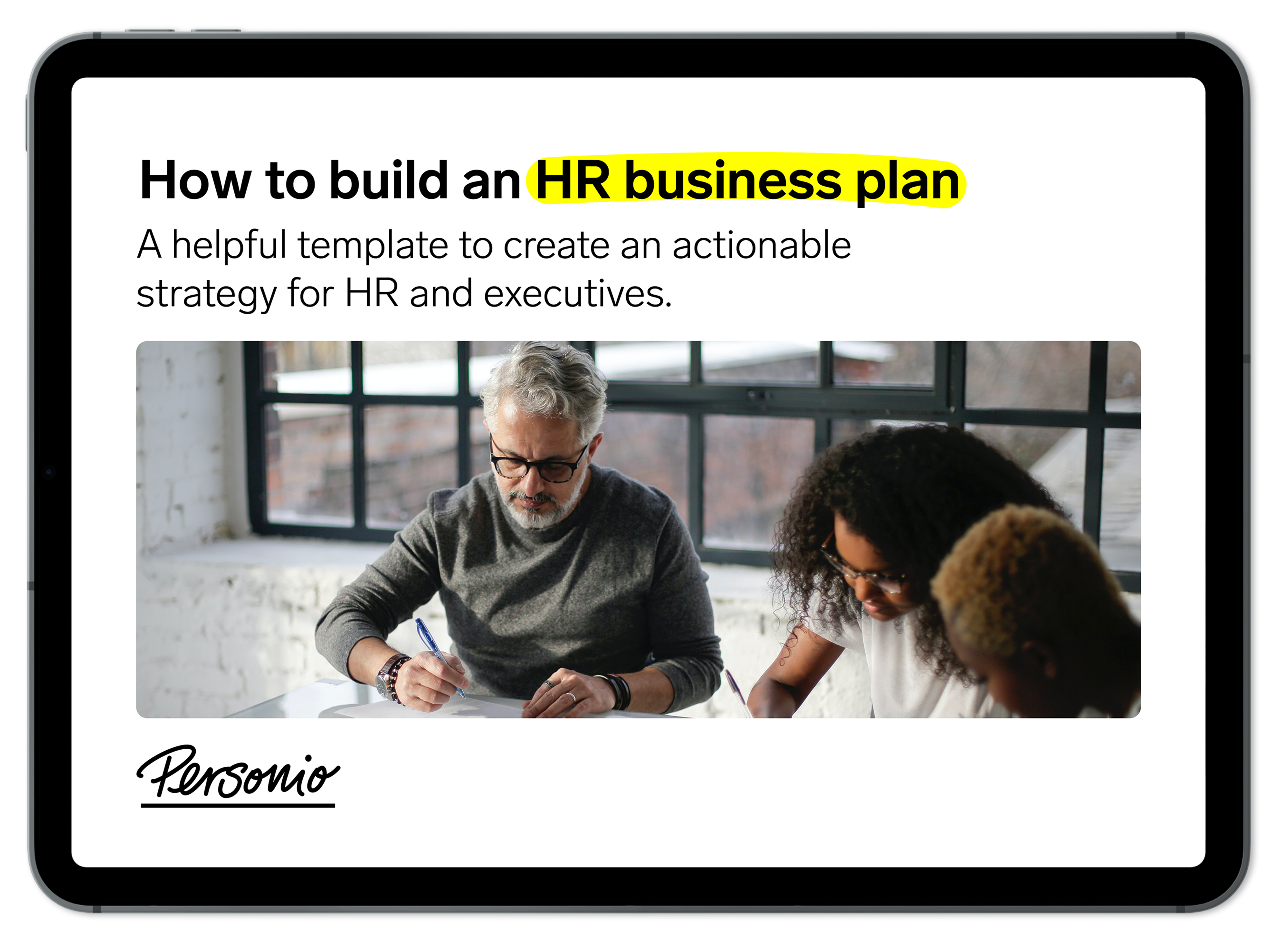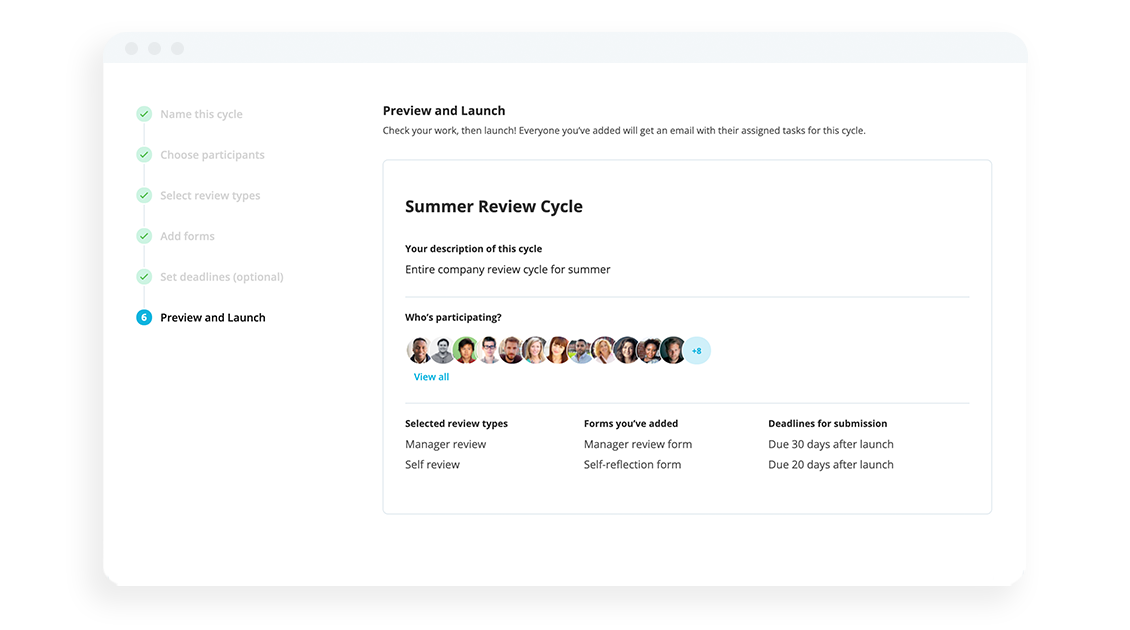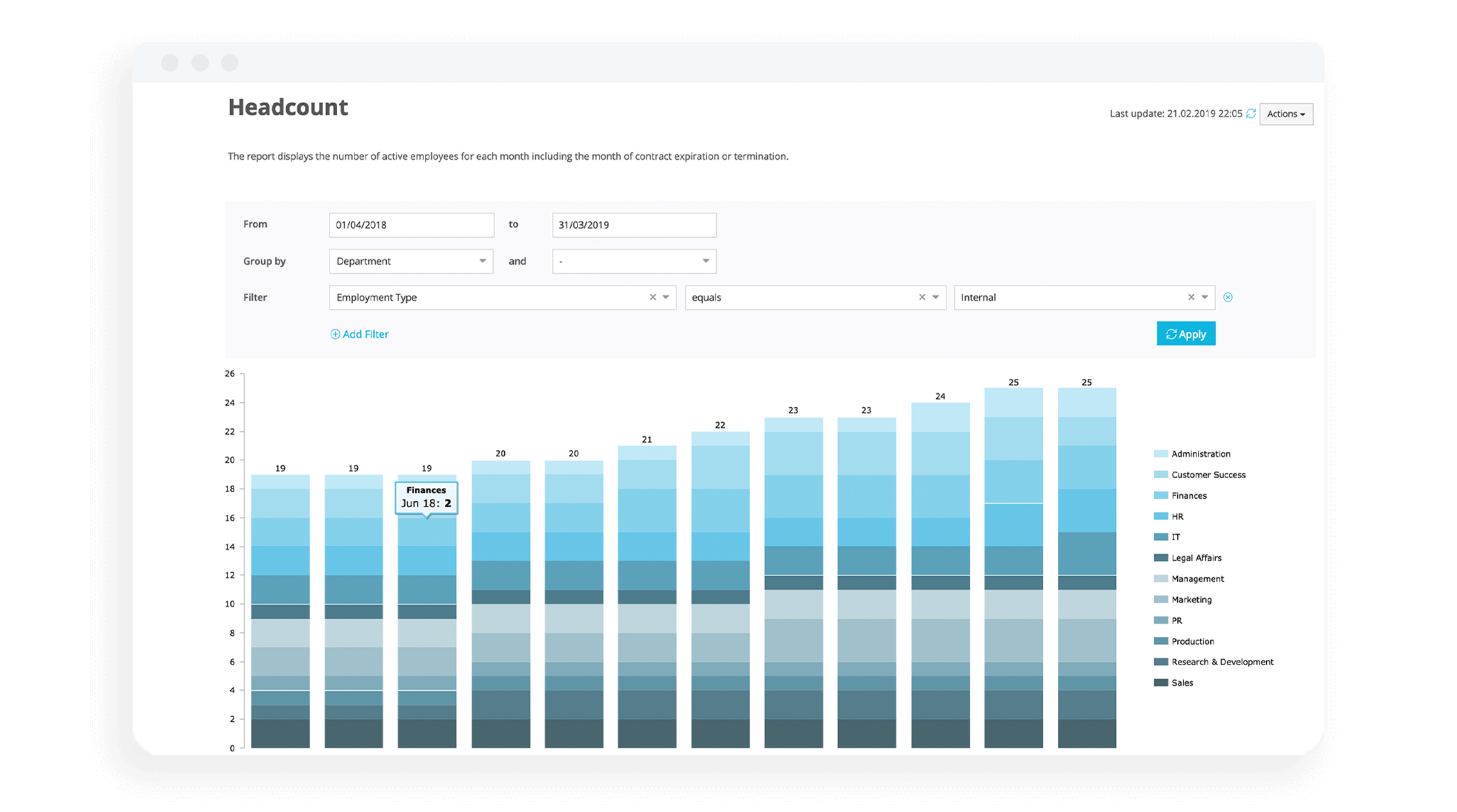
HR Business Plan Template
Unlock executive buy-in with our HR business plan template.
Get the templateThree Great Examples of Workforce Optimisation

Can you do more with what you have, or even with less? Workforce optimisation (WFO) can ensure that you do. As your company’s needs change, workforce optimisation helps ensure you’re still hitting your goals without adding bloat to your staff.
Here, you’ll learn about workforce optimisation: how it works, its benefits and examples of WFO strategies you can put in place at your company.
Key Facts
Workforce Optimisation (WFO) focuses on streamlining employee processes to help everyone put their skills to use in the best possible way.
WFO focuses on company-wide improvements that focus on all departments.
Workforce optimisation requires data to be properly implemented, so using the right software is key to its success.
Contents
- 1What Is Workforce Optimisation?
- 2What are Examples of Workforce Optimisation?
- 3Top Benefits of Workforce Optimisation
- 4Six Actionable Workforce Optimisation Strategies
- 5Software for Workforce Optimisation
- 6Frequently Asked Questions About Workforce Optimisation
- 7Perform High-Quality Workplace Optimisation With Personio
What Is Workforce Optimisation?
The Workplace Optimisation (WFO) model seeks to increase productivity and efficiency while streamlining internal processes. It serves as an umbrella term encompassing several unique methods for improving the effectiveness of your employees while keeping operating costs low. These methods affect a company from top to bottom to create more reliable collaboration between departments and eliminate unnecessary expenditures.
What are Examples of Workforce Optimisation?
Below are several examples of optimised workplace management that can help your business improve operations efficiency and meet changing customer needs…
1. Scheduling
Optimised scheduling means knowing exactly how many employees are needed at a given time to complete as many tasks as possible. Often, that means having a more thorough understanding of each employee’s skills and the performance you can expect from them.
Fine-tuning how you plan the work schedule allows you to utilise your employee’s skills more effectively while avoiding burnout.
For example, retail businesses scale back the number of employees on call during slow periods but hire temp workers during the holiday rush. This streamlined scheduling reduces unnecessary expenses while maintaining peak employee productivity during the busiest work hours.
2. Managing Performance
You can use WFO to make an employee’s schedule more efficient by guiding them to complete tasks based on priority. With the right tools, your workforce can focus on their most essential responsibilities while less important work is scheduled for later.
On an organisational level, your company can reach its milestones more quickly because of a structured employee schedule.
For example, it’s not uncommon for employees to receive small tasks each week that add up and can eventually keep them away from critical work. If those tasks are inevitable, shift to reserving time in the affected employees’ schedules dedicated to handling these pop-up assignments. This method frees up employees’ attention to handle primary responsibilities throughout the rest of the day.
3. Tracking Time
Understanding how time is spent within the organisation is key to optimising your workforce. Knowing when your employees clock in and how long they stay — along with how that time is spent — can help determine if the workday is used to its fullest.
This data-informed approach can help you readjust scheduling to ensure that there’s always the optimal amount of people spending the appropriate amount of time on the right tasks.
For example, an HR representative receives more customer complaints late in the evening than at any other time. By looking at a detailed attendance report, they can determine that the company is routinely understaffed at that time and therefore work to correct it.
Discover a New Partner in Workforce Planning

An HR software can be your greatest asset when it comes to planning out the future of your workforce, and your business. Speak with an expert today.
Book your demoTop Benefits of Workforce Optimisation
Optimising your workforce has several useful advantages to help your organisation achieve long-term success.
1. Increases Productivity
Rather than relying on expensive training to improve your workforce’s skills, WFO helps employees utilise the skills they already have more effectively. Not only does this skip over unneeded training, but it empowers employees to use their skills in a way that benefits the whole company. That signal of trust and investment in their personal development goes a long way for a happy workforce.
2. Reduces Errors
Streamlined operations are perfected operations. When employees aren’t overburdened or distracted, they’re less likely to miss details that may cause significant issues down the road. Although human error is a part of life, the workforce optimisation process is designed to identify and resolve some of the time-wasting stressful errors that were causing issues in the first place.
3. Keeps Down Costs
One of the key aspects of workforce optimisation is eliminating unnecessary components from your company across the board. This is often discussed in terms of staffing — an optimised workforce doesn’t need more employees, just ones that are working smarter and more efficiently. But there are other costs to think of as well, including savings realised through the introduction of automation into the workday.
4. Improves Customer Relationships
Your employees can provide higher quality customer service faster after optimising their typical work processes for maximum efficiency. WFO helps streamline the work pipeline by removing unnecessary or ineffective steps and obstacles that negatively impact the performance of your workforce. You can provide your product or services to the customer faster while being able to respond promptly to any issues.
Those benefits aren’t just felt by employees in a customer-facing capacity like sales or client relations. From marketing to HR, the benefits of workforce optimisation eventually influence the interactions with clients and customers by making the jobs of those employees easier.
5. Finds New Opportunities for Employees To Advance
Employees’ performing at the highest level they’re capable of means that they have a higher chance of advancing through the company. Additionally, because fewer obstacles are holding back their performance, you can get a more accurate view of the skills they’re missing. The company can save money by investing in specialised training for certain workers rather than general development methods. Supporting the professional growth of your team helps increase employee engagement while ensuring that customers get the best service possible.
Six Actionable Workforce Optimisation Strategies
Below are comprehensive guides to six WFO strategies that can help you improve efficiencies in your own company in the long term…
Start With Work Schedules
Better organisation of employees’ schedules, both to guarantee enough coverage and that each individual worker’s day is properly planned, can help ensure you only have the help you need. This strategy encourages gathering data to determine when your company is busiest and creating a schedule that matches it – meaning that your company only has as many employees as it needs. As a result, you’re able to avoid inefficiencies and employee burnout.
Confirm Access of Critical Tools & Resources
Smart tools and the right software ensure employees can get their jobs done with more efficiency, speed and accuracy. Without these tools, your optimisation strategy risks never getting off the ground.
Make sure your employees have access to the tools they need for optimal performance. These can be cutting-edge innovations in social media scheduling platforms or AI-focused project management tools that automate workflows. However, they can also be reliable, tried-and-true tools that still meet your goals — you don’t always need the latest and greatest to get the job done.
It’s not just the quality of the tools that matter. Their relevance to customer needs takes precedence. For example, if customers are gravitating from phone support in favour of text-based support, investing in a text-based system makes sense, even if it isn’t the latest chatbot or AI-informed customer support tool.
Put the Customer Journey First
While WFO saves money by focusing your resources and enhancing processes, you have to be careful not to strip away too much. Making the wrong changes could mean lower quality customer service, eventually impacting sales and your customer base. No matter the changes you’d like to make within the company, it’s always important to consider how those changes eventually affect customers. It’s important to set benchmarks and to continually monitor changes to make sure they’re having their desired effect.
Match the Right Employees to the Right Responsibilities
Every employee brings their own unique talents to the table and giving them tasks that match those skills helps ensure they can work at their peak. This WFO strategy encourages HR employees to have a solid grasp of the strengths and weaknesses of their workforce, so workers can be utilised for workforce optimisation in the best way. Doing otherwise can result in decreased productivity and heightened stress levels from employees as they do work they don’t enjoy.
Don’t Set Your Plan and Forget It
Always review the optimisation methods you use to ensure they positively affect your workforce’s productivity. A consistent, in-depth reexamination of your business can tell you what’s working and what isn’t while keeping you up-to-date on customer trends using new data. As a result, your organisation can anticipate significant shifts in your industry and adjust to meet the moment.
Ensure Your Optimisation Goals Are Realistic
Proper workforce optimisation can lead to greater insights into your customers and employees that you should use to determine company objectives. The additional in-depth knowledge helps set reasonable expectations for your workforce and avoid overworking your staff. For example, if a call centre collects data that shows that employees can only make around 12 calls an hour, exceeding this number won’t produce an optimal result because you risk burning out your workforce.
Build your very own HR business plan with the help of our template. Download it now.Software for Workforce Optimisation
Workforce optimisation is a difficult task for HR to conduct manually because the process relies on data collection and analysis. That’s sure to be a headache if tracking employee schedules and tasks through a set of disparate tools that don’t communicate with one another. Plus, all the data needed to complete WFO is nearly impossible to collect unaided.
A selection of software can help speed up the process. Many programmes help automate more tedious data collection tasks, letting HR representatives focus on other optimisation tasks. There are plenty of workforce optimisation software options to choose from but the one you choose for your business should:
Have a Well-Designed Interface. The interface should be easily-understandable and pleasing to the eye. A more complex interface needlessly complicates optimisation decisions. Plus, if the software is hard to use, everyone in your company is less likely to use it, which would defeat its purpose altogether.
Be Scalable. The software feature can be applied across various departments, allowing both for a broader approach to optimisation or for a focused one.
Include Integration Features. The WFO software should be able to connect to other popular HR programmes to help minimise the amount of work needed to put optimisation measures in place. This way, your data isn’t siloed and it can be evaluated as one body.
Be Cost-Effective. These programmes can be an investment but it’s worth it when you stick with the programme and fully take advantage of all available features.
Frequently Asked Questions About Workforce Optimisation
Why Is Workforce Optimisation Important?
Workforce optimisation is important because it improves employees’ effectiveness with minimal, smart monetary investment while mitigating costs by removing inefficiencies in their typical processes.
What Is the Difference Between Workforce Management and Workforce Optimisation?
Workforce management focuses on improving or maintaining day-to-day productivity in a company’s workforce, while workforce optimisation focuses on improving productivity in the long term.
Perform High-Quality Workplace Optimisation With Personio
Performing workplace optimisation without a WFO tool at hand can be difficult to near impossible. The process involves a large amount of data collection and analysis, which can be so time-consuming that it takes HR representatives away from more important tasks.
Personio is an all-in-one HR software that can automate data collection, tracking employee attendance and long-term performance to help you determine how best to utilise them. Reach out to us for a consultation to learn how Personio can help you manage your workplace.
Disclaimer
We would like to inform you that the contents of our website (including any legal contributions) are for non-binding informational purposes only and does not in any way constitute legal advice. The content of this information cannot and is not intended to replace individual and binding legal advice from e.g. a lawyer that addresses your specific situation. In this respect, all information provided is without guarantee of correctness, completeness and up-to-dateness.
